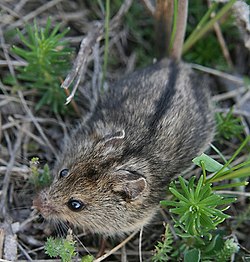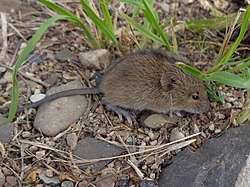Top Qs
Timeline
Chat
Perspective
List of sminthids
Species in mammal family Sminthidae From Wikipedia, the free encyclopedia
Remove ads
Sminthidae is a family of mammals in the order Rodentia and part of the Myomorpha suborder. Members of this family are called sminthids or birch mice. They are found in Asia and Europe, primarily in forests, shrublands, and grasslands, though some species can be found in wetlands. They are all of a similar size, ranging from 4–8 cm (2–3 in) long, plus a 6–12 cm (2–5 in) tail. Sminthids are omnivores and primarily eat seeds, berries, and insects.[1] No sminthids have population estimates, but the Hungarian birch mouse is categorized as endangered, while the Armenian birch mouse, Nordmann's birch mouse, and Severtzov's birch mouse are categorized as critically endangered.

The sixteen extant species of Sminthidae are all in a single genus. Several extinct prehistoric sminthid species have been discovered, though due to ongoing research and discoveries, the exact number and categorization is not fixed.[2]
Remove ads
Conventions
The author citation for the species or genus is given after the scientific name; parentheses around the author citation indicate that this was not the original taxonomic placement. Conservation status codes listed follow the International Union for Conservation of Nature (IUCN) Red List of Threatened Species. Range maps are provided wherever possible; if a range map is not available, a description of the sminthid's range is provided. Ranges are based on the IUCN Red List for that species unless otherwise noted.
Remove ads
Classification
Sminthidae is a family consisting of sixteen extant species in a single genus, Sicista. This does not include hybrid species or extinct prehistoric species.
Sminthids
Summarize
Perspective
The following classification is based on the taxonomy described by the reference work Mammal Species of the World (2005), with augmentation by generally accepted proposals made since using molecular phylogenetic analysis, as supported by both the IUCN and the American Society of Mammalogists.[3]
Remove ads
References
Sources
Wikiwand - on
Seamless Wikipedia browsing. On steroids.
Remove ads






